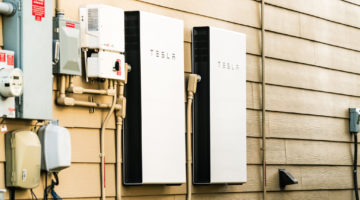
We’ve written a lot over the last few years about the countless price rises and tariff hikes that seem to happen every few months, but the fact is that since 2005, UK gas and electricity prices have more than doubled. While we all know that fossil fuels are finite resources, shouldn’t our growing use of renewable energy sources offset this?
Wholesale Energy Costs
In the last 6 months alone, wholesale energy costs have risen by a reported 21% (that’s 22% for gas and 20% for electricity). The cost of buying energy is the largest element of suppliers’ costs, accounting for around 43% of a dual fuel bill in 2015.
Gas reserves
Following the unexpected cold weather this spring with the Beast from the East, gas storage levels have fallen to their lowest in at least 5 years. As the cold stayed long past its welcome, we all put our heating on and demand soared to unprecedented levels for March. As a result, the National Grid was forced to issue a Gas Deficit Warning.
We’re still dealing with the fallout from that spike in gas use, and unfortunately the main consequence is the higher cost of gas. That’s not so bad right now, given that all most of us can think about are cold showers and never turning the heating on again, but this heatwave won’t last forever. If Game of Thrones has taught us anything it’s that winter is indeed coming, and it looks like this could be our most expensive yet.
 Electricity generation
Electricity generation
You may think we’re done talking about gas, but we’re not. Although the UK has made a dramatic change to how much electricity it generates through coal, the same sharp decline has not been so consistent with gas. At the moment about 44% of our electricity is generated by gas, which as we all now know, is in short supply.
Although this may all sound very doom and gloom, it should be noted that our use of renewable sources of electricity has risen hugely in the last decade. As this continues to rise, we should start seeing a drop in gas dependence and demand.
Energy Suppliers
Hedging
Given the volatility of wholesale market fluctuations, the vast majority of energy suppliers employ a practice known as hedging. This involves buying their energy in advance of when they will need it; at the time of writing it’s summer 2018, but you can bet that all the biggest companies are already buying in their energy for winter. Some hedging is done years in advance.
Companies do this to minimise their risk – if the price of gas or electricity were to suddenly skyrocket, they (and your bills) could theoretically carry on relatively unaffected. It’s effectively a buffer for any sudden fluctuations to the market.
However, it’s a double sided coin – what saves you from price spikes can also prevent you from benefitting from unexpected price drops. If a supplier buys in all its energy 3 years ahead of time, then the price drops and drives the market price down (or it doesn’t rise as much as expected), then the supplier is faced with the option of either keeping its prices high to pay for the more expensive energy, or lowering them to keep customers happy and potentially operate at a loss.
Network Charges
Suppliers are charged for the costs of building, maintaining and operating the infrastructure used to deliver energy to their customers. When you see an engineer 10 foot up working on the power lines outside your house, that’s all being paid for by the energy suppliers. Though these costs are regulated by Ofgem, they are just as susceptible to market fluctuations and variances as anything else. The higher these costs are, the more your energy company will charge customers in order to maintain their profit margins. In 2015 around a quarter of all dual fuel bills were down to network charges.
Profits
Quite aside from these internal costs is the fact that energy suppliers are businesses. They have people to employ, targets to hit, and profit margins to grow. The heads of the Big 6 are all multi-millionaires who, unsurprisingly, want to stay that way. While this financial motivation might sound a little pessimistic, it’s worth remembering that these economic mechanisms are a double-edged sword, driving energy prices down at times as well as up.
Government Policy
Capacity Market Payments
A government scheme that is far too complicated to detail here, but I’ll give you the cliffnotes version. From 2017 all energy suppliers have been required to make payments to help ensure that we have enough energy for the future. Having enough energy for the future means not having to buy in expensive energy from abroad at times of high demand, therefore keeping wholesale costs down. It’s not a bad concept, but until its money saving results can be felt, it’s an additional cost for your energy supplier.
Schemes and Programmes
In order to tackle fuel poverty and support the implementation of retrofitted energy efficiency solutions, the UK government requires energy suppliers to shell out for a few different schemes.
- The Renewables Obligation ensure that UK energy suppliers are required to source increasing amount of electricity from renewable generation.
- The Energy Company Obligation requires larger energy companies to fund energy efficiency measures for UK homes.
- The Feed-in Tariff allows small-scale renewable electricity generation technologies to sell their extra electricity back to the grid; a cost which is funded by the suppliers and alters over time according to the fixed sell-back price.
- The Warm Home Discount obligates larger energy suppliers to provide direct and indirect support for customers in fuel poverty.
These programmes accounted for around 7% of dual fuel tariff costs in 2015.
Although price hikes are painful, there are a lot of reasons why they happen, and usually it’s down to a combination or slow up build of any number of factors. We’ve only given a brief overview here, but in reality it’s an extremely complicated system based on a lot of assumptions and best-guesses.
We try to keep you abreast of all significant energy price hikes as and when they are announced. Sign up to our mailing list to stay informed.
Think we missed something? Do you have a different opinion?
Comment below to get your voice heard…












Really appreciate your article and the level of detail around energy prices and how energy companies manage their exposure. One of the big challenges for independent and small businesses is that ‘hedging’ and access to wholesale markets is simply not an option. Price management comes down to being able to switch energy providers- and traditionally that is complicated. We are solving this at EnergyBillKill.com with new apps that make business gas and electricity very easy for business owners. They can take the savings from switching and use them for green energy projects